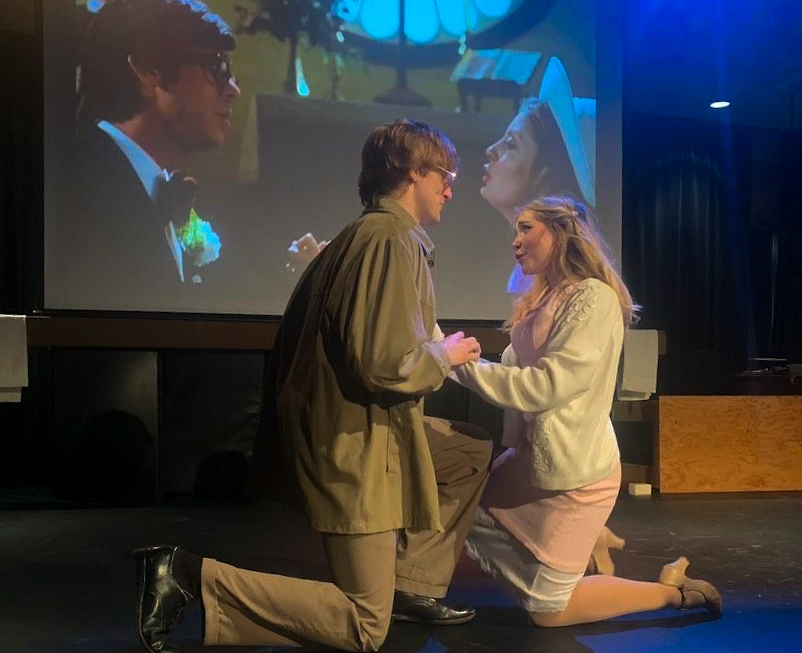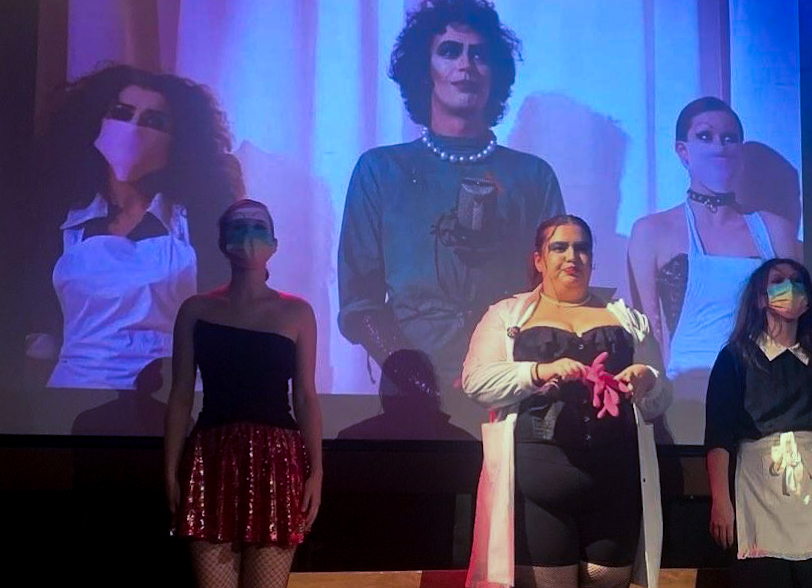FASA teamed up with CAST to put on a smashing live production of the legendary 1975 film.
Stilted dialogue, heavy makeup, fishnets, cheap wigs, sequences, musical numbers that just grasp the right keys, and dialogue so stiff it might crumble if you take it too seriously—nearly 50 years after its original release, the musical comedy tribute to science fiction films of the 30s and B movies from the late 40s to early 70s, The Rocky Horror Picture Show returns to Concordia for another year.
To celebrate the excellent shadow performance of The Rocky Horror Picture Show from Fine Arts Student Alliance (FASA) x Concordia Association of Student in Theatre (CAST) on Oct. 27, we will journey into a brief history of the film and how it became a cult classic to screen and perform every year on Halloween. Indeed, not despite, but rather because of the glorious gender-bending oddities of this film, Rocky Horror is a cultural powerhouse.

Originally titled They Came from Denton High, Richard O’Brien began work on a busy script to keep himself occupied between gigs. Something of an homage to his childhood of science fiction, rock and roll, B movies, and struggles with sexual identity, O’Brien eventually shared the script with theatre director Jim Sharman who saw the play’s potential and reserved a space in London’s Royal Court Theatre for O’Brien to bring the show to life. The original runtime was a mere 40 minutes, but the cast was more concerned with fun than phenomenal success.
The Rocky Horror Picture Show originally premiered in a small 60-seat venue, but quickly moved onto larger venues in London. The musical comedy horror caught the attention of Ode Records owner Lou Adler, who, charmed by the unique and campy heart of the performance, decided to purchase the U.S. theatrical rights to the show. He and film producer Michael White loved the musical so much that they wanted it adapted for the silver screen. 20th Century Fox did not share this faith, and gave the project a small budget of $1.6 million and six weeks to film.
The film was finished without much oversight from the studio, and premiered at the UA Westwood Theatre in L.A in September 1975. The studio claimed that many of the people attending the sold-out shows were repeat offenders, but other test screenings received poor reviews from critics and general audiences. The national release was quickly cancelled, but the film continued screening at the Waverly Theatre (now called the IFC Center), an arthouse theatre specializing in midnight shows to salvage some money.
From here, The Rocky Horror Picture Show screenings became, and continue to be, something of a festival. Adoring fans return screening after screening, year after year, making friends with other loyal fans of the mesmerizing dialogue and cues. This has led to the creation of a community who gathered around this film to celebrate and lovingly mock its quirks. Eventually, this has also evolved into playful heckling—for which the film is perhaps best known—as fans shout at the screen to mock the film, dialogue, and characters.
The heckling tradition began with Louis Fariz yelling “Buy an umbrella you cheap bitch” to Janet, played by Susan Saradon, as she held a newspaper over her head as a shield from the rain. This became a culture of quick quips and other funny remarks intended to get a laugh out of the audience. Next, fans began dressing up like the film’s characters and eventually shadow-acting the film underneath the stage. Word quickly spread about the spectacle of The Rocky Horror Picture Show and midnight screenings popped up across the United States and into other countries, as many were interested to experience the antics and freedom of a film, experience, and community that centres personal expression and provides an opportunity to explore a new side of your gender and sexuality.

The Rocky Horror Picture Show creates a space to challenge social norms, to explore gender and sexual identities, and to find a community who accepts you regardless of the shade of cheap red lipstick kissing your lips. The film is the ritual, the film is the community. The film was put on wonderfully by FASA and CAST, and I recommend you catch it next year.




